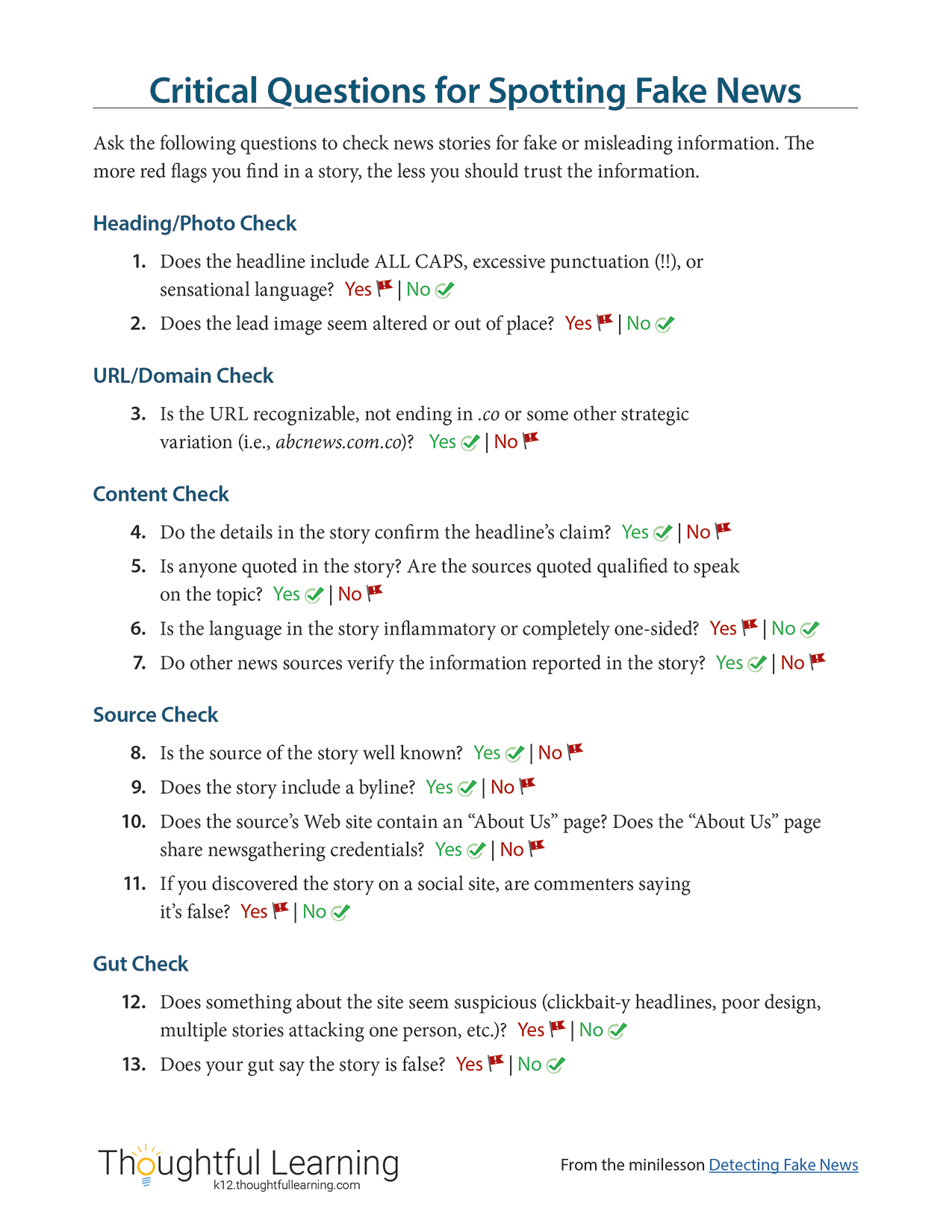Minilesson Print
Detecting Fake News

“Fake news” refers to intentionally false, misleading, or exaggerated stories disguised as factual news. Such stories can appear in any medium but appear frequently on social media, where misinformation can be shared widely and rapidly.
Fake news may be difficult to spot, so you need to be on high alert when you view news from your social accounts. In the following activity, you'll apply critical questions to help you separate real news from fake news.
Your Turn Follow the directions to detect fake news.
- Choose a news story that you don't know much about, preferably one that is shared on one of your social-media feeds. (If you don't use social media, type "trending topics" into a search engine, and choose a story from the results.)
- Apply the "Critical Questions for Spotting Fake News" to the story. (You can download the questions at the bottom of the lesson.)
- Write a brief paragraph that explains why the story is or is not reliable. In your response, identify at least one other source that confirms (or debunks) the information.


Detecting Fake News by Thoughtful Learning is licensed under a Creative Commons Attribution-NonCommercial-ShareAlike 4.0 International License.
Based on a work at k12.thoughtfullearning.com/minilesson/detecting-fake-news.